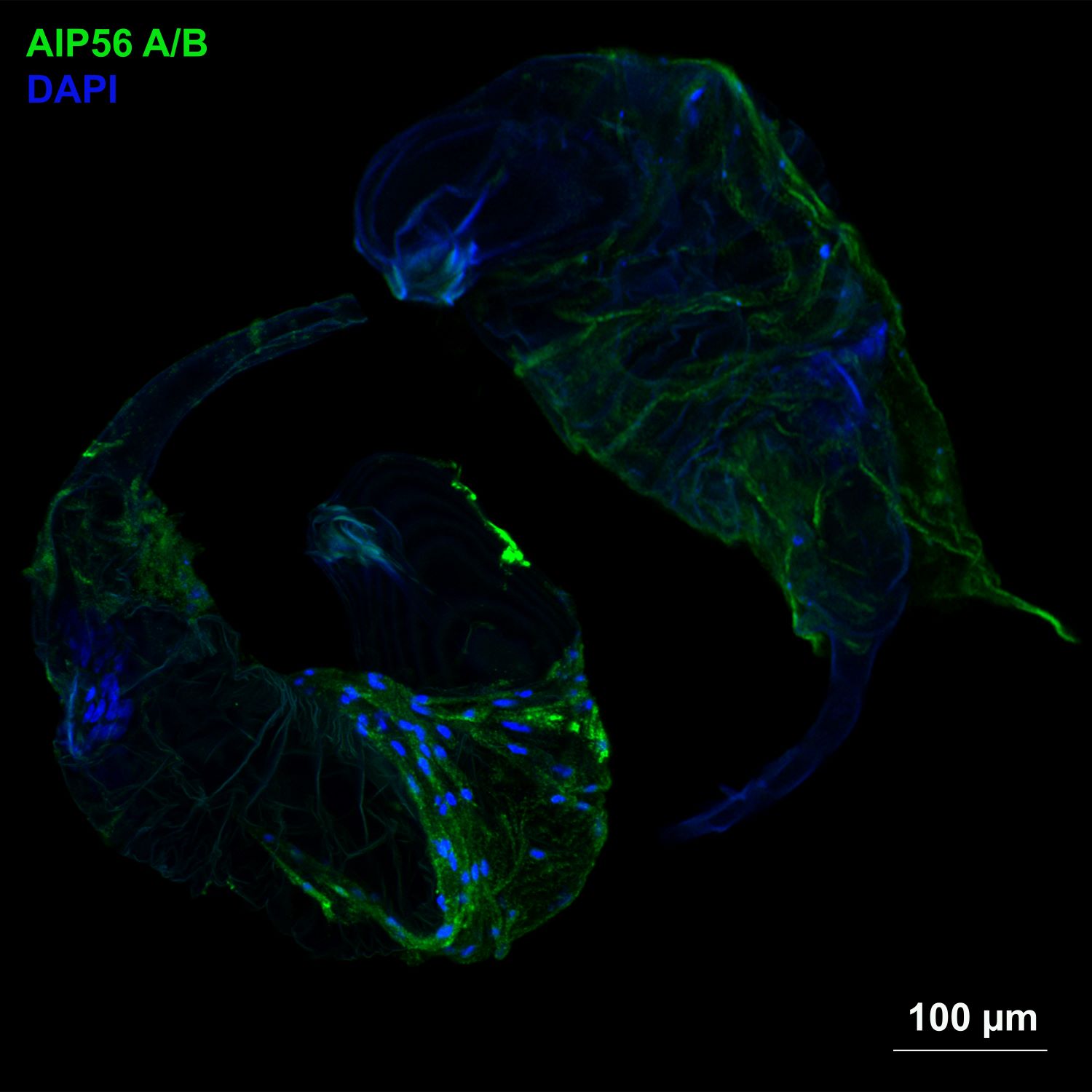May 17, 2023 | News
The immune system deploys effectors that are able to limit or kill pathogens, in turn, invaders developed various counteractive mechanisms. This host-pathogen coevolution resulted in the development of various forms of immune defenses and virulence factors in both hosts and pathogens. The evolved molecular networks that regulate immune responses are the result of this constant fight and their basic components are inherited across generations via vertical gene transfer. Our research - carried out in an intensive international collaboration with the Department of Integrative Biology, University of California, Berkeley and published in PNAS, the official journal of the National Academy of Sciences, with shared first and corresponding authorships between the ELKH and the Berkeley team - revealed, that bacterial toxin cargo genes have been horizontally transferred to animals, where, as integral components of innate immunity, they provided improved fitness and adaptation to environmental factors (doi: 10.1073/pnas.2218334120). It was shown that two genes encoding for AB-type genotoxins, the cytolethal distending toxin B (CdtB) and the apoptosis inducing protein of 56 kDa (AIP56) were transferred from microorganisms into the genomes of several insect species by horizontal gene transfer (HGT) ~21 million years ago. It is well documented that CdtB and AIP56 toxin proteins are used by bacteria to attack eukaryotic organisms. We found, that species of the ananassae subgroup of Drosophilidae, which are highly resistant to parasitoid wasps, also deploy CdtB and AIP56 toxins against parasitoids. In the genome of the reference species, D. ananassae, a single copy of cdtB upstream of two tandem cdtB::aip56 fusion genes, referred to as cdtB::aip56 A and cdtB::aip56 B are present on the second chromosome. We have found that the CdtB protein is produced by embryonic immune cells, so called macrophages, while the fusion proteins are highly expressed by the cells of the immune system in the parasitoid-infected D. ananassae larvae and are detected on the developing parasitoid wasp’s serosa (Fig. 1). Loss-of-function mutant lines for the cdtB and cdtB::aip56 genes are highly susceptible to parasitoid wasp infection. We concluded that the toxins act on the parasitoids starting from their early developmental stages, as they primarily bind to- and possibly attack the serosa, an epithelial layer of cells that is of major importance in protecting and feeding the wasp embryo.
In conclusion, millions of years ago, insects captured and domesticated toxins from prokaryotes, which integrated into their immune defense networks and now function as new modules, key components in an effective protection against their major enemies, the parasitoid wasps. Our research showed that prokaryotic toxin genes, which originally were used by bacteria to attack eukaryotes, served as macromutations that can trigger the evolution of novelty in animals leading to a non-canonical form of immune defense, which also involves a recently discovered effector cell type, the multinucleated giant hemocyte, characteristic for the ananassae subgroup species (doi.org/10.1159/000369618). We hypothesize that auto-toxicity during the deployment of these toxic molecules can be overcome by interactor proteins, which could temporarily block the toxic effect or keep the toxins in an inactive conformation. These newfound complexities in Drosophila immune responses open up novel, hitherto unexplored areas in the evolution, function and mechanisms of the innate immune system.

Figure 1: AIP56 A/B proteins on the serosa of the parasitoid, detected by indirect immunofluorescence
The work is described in the following publication:
Verster KI, Cinege G, Lipinszki Z, Magyar LB, Kurucz É, Tarnopol RL, Ábrahám E, Darula Z, Karageorgi M, Tamsil JA, Akalu SM, Andó I, Whiteman NK. 2023. Evolution of insect innate immunity through domestication of bacterial toxins. PNAS. 120(16):e2218334120. doi: 10.1073/pnas.2218334120.
COMMENTARY on the article in PNAS:
Oliver KM. 2023. Flies co-opt bacterial toxins for use in defense against parasitoids. PNAS. COMMENTARY. 120(19):e2304493120. doi.org/10.1073/pnas.2304493120.